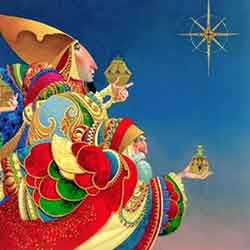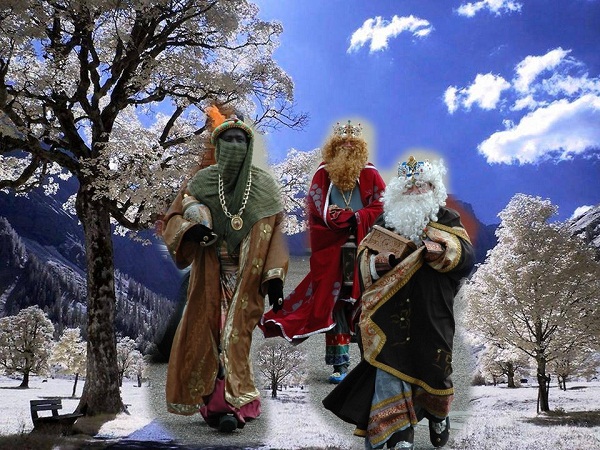

Traditional Mexican Food on Three Kings Day The fillings are typically cheese-based but also come in some other delightful flavors such as guava, pineapple, and cajeta, or caramelized goat’s milk. The Rosca de Reyes cakes come in several sizes and can be plain or filled. It’s traditional for the host to serve the tamales for the party. Tradition dictates that whoever gets the baby in their serving must have the fiesta on Día de la Candelaria, or Candlemas Day in English, on February 2. They come with small hard plastic or ceramic baby Jesus figures cooked inside! The fruits symbolize two things to the Mexican people: the jewels of the Three Kings’ crowns and the colors of the Mexican flag.īe careful while you’re eating the pastries. Its shape is symbolic of a crown and embellished with red and green candied fruits and nuts. Originating in Spain and brought to Mexico by the Spanish, Rosca de Reyes (Kings’ Cake) is more like sweet bread. When visiting Mexico during the Christmas season, keep in mind: those lovely-looking, round, donut-shaped pastries are dangerous.

They’re waiting for the Three Kings! Three Kings Cake So, don’t be surprised if in southern Mexico you get some dull stares if you ask children if they’re excited about Santa. Often, there are also gifts under the Christmas tree or, if no tree, by the nativity scene, from the Three Kings. In the morning, excited children find their shoes empty of hay and filled with brightly colored candies and small toys. Shoes are left out before bed, filled with hay for the kings’ hungry camels. It’s a very festive day filled with extended families visiting, games, and for the children, Los Tres Reyes Magos (the Three Wise Men) bring gifts to hide in their shoes. Even so, in some areas of Mexico, lucky children receive gifts from Santa, usually on December 24, and from the Three Kings on January 6.ĭia de los Reyes is the day that the southern Mexican and most Latin American cultures exchange gifts. Generally seen as “imported,” Santa did not gain nearly the same foothold in Mexican culture as he did in the United States. Santa wasn’t a “thing” until the 20th century, when the United States commercialized “Santa” as an icon for the Christmas buying season. The Three Kings are the traditionally prominent figures of Christmas in Mexican culture. Los Reyes Magos (the Three Wise Men) and their animals are placed out on January 5 to depict their arrival. Pieces are added to the scene over the Christmas season as they played out in history.įor instance, the baby Jesus figure is placed in the manger on Christmas Eve. It’s used not only to depict the birth of the Christ child, but also plays the role of a Christmas calendar of sorts. The Nativity scene plays an important role in Mexican Christmas celebrations. Melchior was the King of Persia, Caspar the King of India, and Balthazar was represented as an Arabian King and occasionally a King of Ethiopia. The Three Kings were Melchior, Caspar and Balthazar. Being the 12th day of Christmas, it signals the end of the holiday season. Much of Latin America, and specifically southern Mexico, concentrates their holiday festivities on January 6th, el Dia de Los Reyes (Day of the Kings). It celebrates the journey of the Magi, or Three Wise Men, who brought gifts of gold, frankincense, and myrrh in the famous biblical Christmas story. Three Kings Day, a Catholic celebration, can be traced back to the 4th century, when it was celebrated by the Greek-speaking portion of the eastern Roman Empire. Whatever its name, its origin is ancient. Three Kings Day is a holiday with many names: Three Kings Day, The Day of the Kings, Epiphany, Twelfth Night, Little Christmas, Theophany, Timkat, and Reyes are just some names this holiday goes by.


 0 kommentar(er)
0 kommentar(er)
